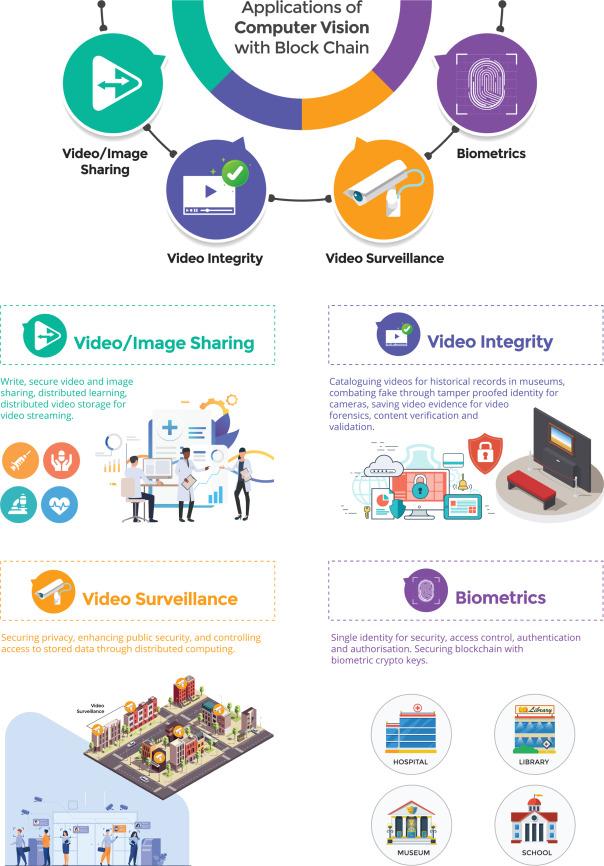Revolutionizing Learning: implementing Blockchain in Educational Institutions for Secure and Transparent records
Education is evolving at a rapid pace, driven by innovation and technology. Among the most promising advancements is blockchain technology, which brings unprecedented security, clarity, and efficiency in managing educational records. In this thorough guide, we’ll explore how integrating blockchain in educational institutions is not only enhancing record-keeping but also reshaping learning experiences for students, faculty, and administrators.
What is Blockchain in Education?
Blockchain is a decentralized, secure ledger technology known best for powering cryptocurrencies like Bitcoin. Its relevance to education lies in its ability to store data in tamper-proof blocks, ensuring transparent and auditable records. When applied to “secure academic records,” educational institutions can safely store transcripts, diplomas, certificates, and learning achievements — accessible only with proper authorization.
Key Features of Blockchain for Educational Records
- Immutable: Once stored, records cannot be altered or deleted, guaranteeing data integrity.
- Decentralized: No single entity owns the data; it’s distributed across a network, reducing risks of manipulation.
- Transparent: Every transaction is visible to authorized users, promoting trust and accountability.
- Secure: Advanced cryptography protects records from unauthorized access.
- Efficient: Streamlines administrative workflows, reducing paperwork and manual errors.
Why Educational Institutions Should Adopt Blockchain
From universities to technical colleges and high schools, blockchain in educational institutions offers transformative potential. Let’s dive into the leading benefits:
Major Benefits of Blockchain in Education
- Secure Student Records: Digital transcripts, certificates, and credentials stored on blockchain are highly resistant to forgery and loss.
- Transparent record Management: Stakeholders can easily audit data pathways, preventing data tampering.
- Efficient Credential Verification: Employers and other educational institutions can verify credentials instantly online, simplifying admission and recruitment processes.
- Streamlined Administration: Reduces time spent on manual bureaucratic processes and paperwork, saving resources.
- Improved Student Control: Students can access, manage, and share their own digital records securely.
- Global Recognition: Standardized digital certificates allow degree transferability across borders.
How Blockchain is Implemented in Educational Institutions
Institutions eager to harness blockchain must consider both technical and cultural shifts. Implementation involves a combination of new platforms, staff training, and policy adjustments. Here’s a practical step-by-step guide:
Practical Tips for Adopting Blockchain in Education
- Assess Institutional Needs: Identify which records (degrees, transcripts, attendance, etc.) would benefit most from being on the blockchain.
- Choose the right Platform: Leverage solutions like Blockcerts, which is designed for academic credentialing, or consider building custom platforms.
- Data Migration: Transition legacy data carefully, ensuring integrity and privacy protections.
- Staff Training: Educate administrators and educators on the new system and best practices.
- Student Empowerment: Teach students how to access and control their own blockchain-secured records.
- Compliance & Privacy: Adhere to regulations such as FERPA, GDPR, and local education laws regarding data security and privacy.
Technical Considerations
- On-premise vs. cloud-based blockchain solutions
- Integration with existing Student Facts Systems (SIS)
- Smart contract growth for automating processes like graduation eligibility
Case Studies: Blockchain in Action
Several pioneering educational institutions have successfully adopted blockchain, proving its value beyond theoretical hype.
MIT: Digital Diplomas Through Blockcerts
The Massachusetts Institute of Technology (MIT) partnered with Blockcerts to issue digital diplomas on the blockchain. Graduates receive a private digital key for instant diploma verification, giving them full control and security over their credentials. This project set a standard for authenticity and mobility in academic records.
The University of Nicosia: Blockchain-Powered Transcripts
The university of Nicosia in Cyprus implemented blockchain for issuing and verifying academic certificates. This empowers students to share their credentials securely while ensuring that employers and institutions can verify them in real-time, eliminating fraudulent claims.
sony Global Education: Blockchain for Global Learning Records
Sony Global Education has piloted a blockchain-based platform for storing student achievement across global education providers, paving the way for international record interoperability and standardized credential verification.
First-Hand Experience: Perspectives from Stakeholders
Student Quotes
“Having control over my academic records on the blockchain means I never have to worry about lost transcripts or waiting for administrative delays. Employers accepted my digital diploma instantly!” — Jane Doe, Graduate
Administrator Insights
“Blockchain has streamlined our credentialing process, saving both time and operational costs.Compliance audits are much easier thanks to the tamper-proof, transparent system.” — John Smith, University Registrar
Challenges and Considerations
While the benefits of blockchain in education are clear, institutions should consider potential challenges before implementation:
- Interoperability Issues: Not all schools use the same systems, complicating unified blockchain access.
- Legal and Privacy Concerns: Blockchain must comply with regional and international data protection laws.
- Upfront Costs: Initial migration and training can be costly, but long-term savings are considerable.
- Cultural Shift: Accomplished adoption requires stakeholder buy-in and digital literacy among staff and students.
The Future of Blockchain in Educational Institutions
The adoption of blockchain in education stands at an exciting crossroads. As more universities and schools adopt blockchain for secure and transparent record management, we’ll see an industry-wide transformation marked by:
- Digital diplomas accepted globally
- Automated degree verifications
- Secure, self-managed learning histories for lifelong education
- Reduction in credential fraud
Emerging uses may include tracking student participation, performance analytics, and automated scholarship or grant distributions via blockchain smart contracts. The outcome? Education tailored for a digital world, where learners and institutions connect seamlessly, securely, and transparently.
conclusion: Unlocking the Potential of Blockchain for Education
Blockchain technology is the catalyst needed to propel educational institutions toward secure, transparent, and efficient record-keeping. By adopting blockchain, schools and universities can empower students, foster trust, and streamline administration—while enhancing global opportunities for learners everywhere.
Whether you’re an educator,administrator,student,or policymaker,understanding and advocating for blockchain in education is vital for future-readiness. As educational records become more digital, ensuring their safety and transparency through blockchain will be foundational to revolutionizing how we learn and prove what we’ve learned.
Ready to join the revolution? Start exploring how blockchain can transform your educational institution today!

